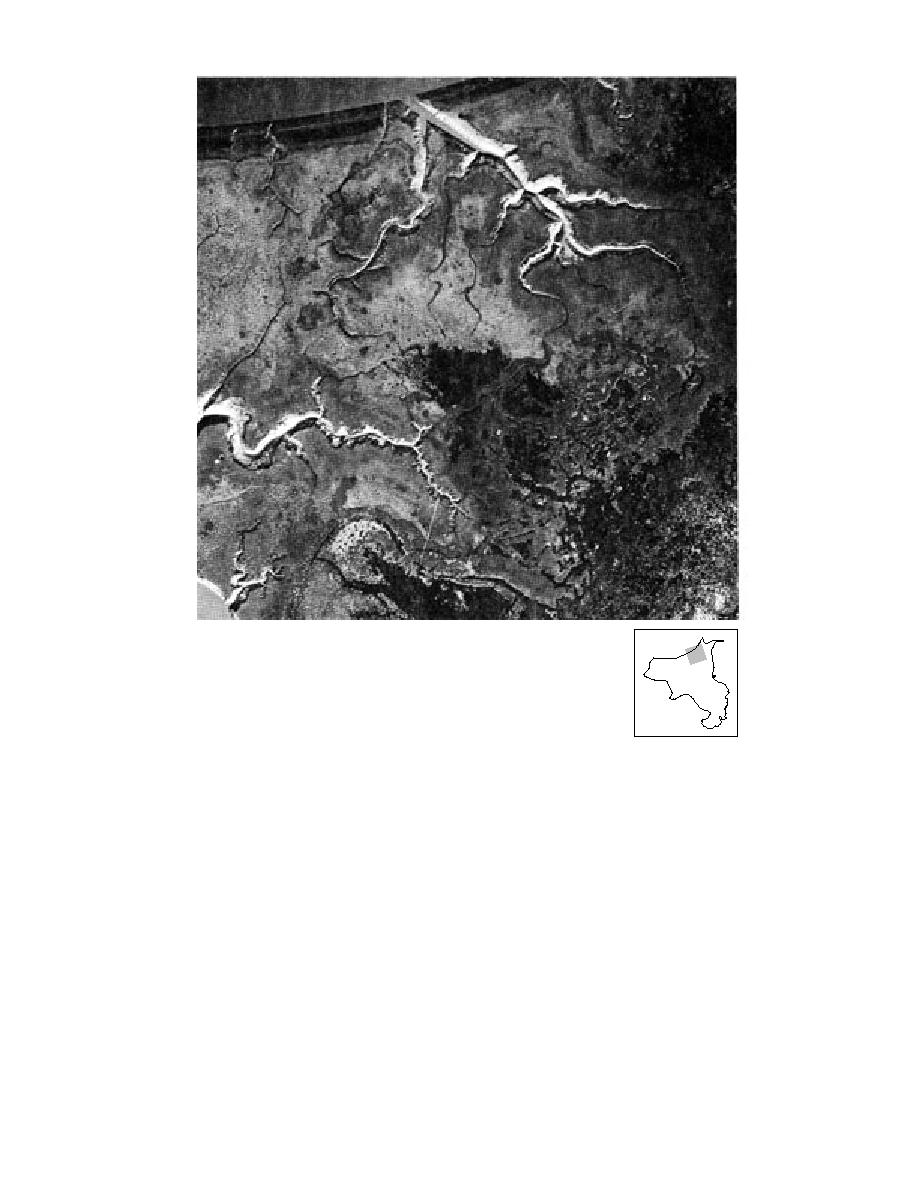
a. Typical active gully erosion following courses of relief
drainageways.
Figure 4. 1994 aerial photographs of ERF (originally color
infrared).
lar to that found near the Portage area of
other factors, most of which lie beyond the scope
of our analysis. In particular, tectonic, and espe-
Turnagain Arm (Ovenshine et al. 1976a). Since
cially earthquake, activity is virtually impossible
the earthquake, the region has been rising at about
1.5 cm/year, although the rate has been decreas-
to predict; however, its impact on the physical
system of ERF may be enormous.
ing over time (Brown et al. 1977).
Eagle River Flats was last severely struck by
How the physical system responded to these
the 1964 Alaskan Earthquake (magnitude 9.2 on
changes in elevation is unknown; however, an
the Richter Scale [Cohen et al. 1995]), with both
increase in pond water depths may have resulted
in an increase in sedimentation rates, in keeping
sedimentary and tectonic subsidence affecting the
with what happened in Turnagain Arm (Oven-
site's elevation (Small and Wharton 1969) and
shine et al. 1976a). In addition, after the elevation
thus its physical processes. A tectonic drop of
drop, the tidal flat hydrology would be out of
about 0.60.7 m was recorded in the Anchorage
equilibrium, bringing a response from the physi-
region (Brown et al. 1977). Subsidence caused by
sediment liquefication and solidification probably
cal system. Disequilibrium would have been main-
reduced the pond elevations by an amount simi-
tained by the uplift following the earthquake.
4



 Previous Page
Previous Page
